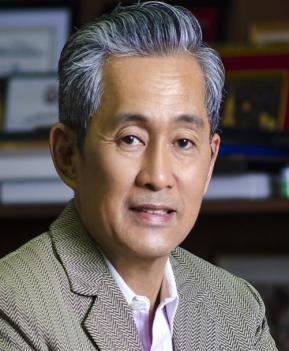TECH4GOOD

We spend a lot of time talking about AI these days. I believe this will be my fifth article on the same subject. Most discussions are focused on three dimensions: Ethics, governance, and jobs. What about its impact on education? Stealthily, AI is rapidly transforming the education sector today including here in the Philippines, and is poised to revolutionize the way both learning and teaching are done.
Imagine an education system where teachers have very little administrative work to do and students learn at their own pace and in a way that is most effective for them. AI-driven tools and technologies are already being used to personalize learning, automate tasks such as preparing lesson plans and grading assignments, and provide students with real-time feedback. This frees up teachers to focus on more important tasks, such as developing relationships with students and providing personalized instruction.
Some schools may be banning it completely like how calculators were banned in classrooms some decades back but some are seeing tremendous potential in the technology as a teaching tool.
Generative AI is disrupting education by making it possible to personalize learning for each student. For example, AI-powered learning platforms can adapt the difficulty of questions and problems to match the individual student’s needs. AI can also be used to automate many of the tasks that teachers currently perform, such as grading assignments, preparing lesson plans, and providing feedback to students.
Other uses include the creation of personalized learning materials, such as interactive textbooks, and adaptive learning modules, including content for students with disabilities thus making education more accessible and inclusive. It can even analyze student data easily and identify patterns that indicate a student is at risk of dropping out or failing a course allowing institutions to intervene early and provide additional support to these students. AI-powered virtual tutors, on the other hand, can provide students with one-on-one instruction and support.
Crafting course learning outcomes and aligning curriculum to stated outcomes are usually left to experts. Educators spend huge amounts of time building such content. This is where platforms such as the world-leading AI-powered Cypher CoPilot solution can relieve a lot of that hard work. It does an amazing job of creating quality materials in so short a time complete with multimedia learning modules, tests, study guides, glossaries -and all tied to competencies.
Cypher claims that it can reduce the amount of work required to curate courses by 80 percent on topics chosen by educators which would usually take them weeks to develop. It does not take away the job of the teacher but instead would allow the teacher to spend more time doing what teachers are supposed to do, which is teaching and inspiring their students. They also have to be responsible for ensuring the accuracy of the AI work. Interestingly, the version being used today is based on the work of three AI engines, each cross-checking the accuracy of the other two taking away much of the burden from the teacher.
And this is just scratching the surface of what AI can do for education. I understand that DepEd is about to pilot the Cypher for Academia solution including its CoPilot platform. The system will help create a more engaging, interactive learning experience for students while improving efficiency for teachers. It would then become easy to harmonize evolving global learning outcomes and inject them into the curriculum in real-time allowing the Philippines to produce the competencies needed today.
While AI has the potential to revolutionize education, there are also some challenges that need to be addressed. We still have a lingering issue about the inadequacy of the country’s digital infrastructure. There have been significant improvements in the last couple of years but still not enough to allow an inclusive roll-out of an AI-driven education system on a nationwide scale. Another challenge is that teachers need to be trained on how to use AI effectively in the classroom.
To help address the issues of academic integrity and privacy, UNESCO recently released a guidance for generative AI in education and research. It recognizes the absence of national regulations on AI in most countries leaving the data privacy of users unprotected and educational institutions largely unprepared to ensure the responsible use of generative AI in their campuses. The guidance is aimed at supporting actions, planning policies, and ensuring the human-centered use of these new technologies. It stresses the need for their ethical and pedagogical appropriateness for education.
As AI and its Generative AI derivative continue to evolve, it is crucial for our education managers to strike a balance between harnessing its potential and mitigating its risks. In doing so, we can ensure that AI continues to have a positive and lasting impact on society. ([email protected])
(The author is an executive member of the National Innovation Council, lead convenor of the Alliance for Technology Innovators for the Nation (ATIN), vice president of the Analytics and AI Association of the Philippines, and vice president, UP System Information Technology Foundation.)